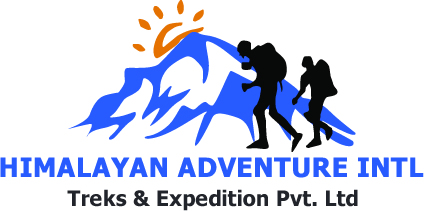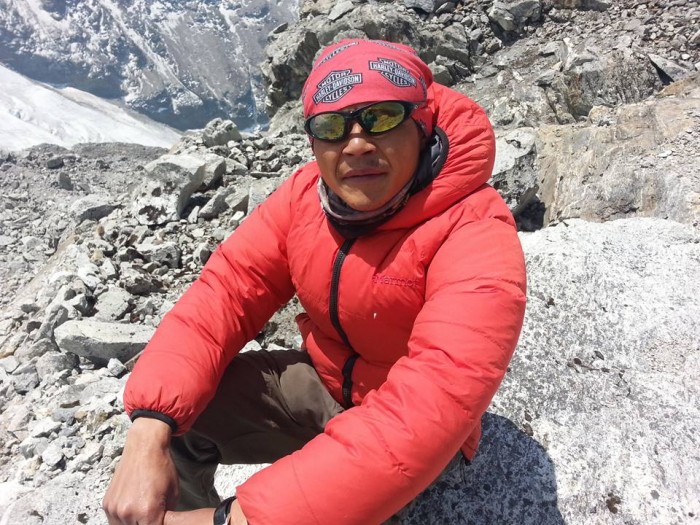The Annapurna Sanctuary Trek, also known as Annapurna Base Camp Trek, is a breathtaking journey into the heart of the Annapurna Massif. This trek is one of Nepal’s most popular adventures, offering dramatic Himalayan scenery, rich Gurung and Magar culture, and moderate difficulty suitable for fit trekkers of any age.
In this comprehensive guide by Himalayan Adventure International Treks, we cover:
-
Annapurna Sanctuary Trek cost for Nepali and Indian trekkers
-
Pokhara to Annapurna Sanctuary distance and route
-
Detailed itineraries (4, 5, and 10 days)
-
Food and accommodation cost breakdown
-
Permit costs
-
Hiring a guide and porter with prices
-
Kathmandu to Annapurna Sanctuary Trek travel details
-
Google-friendly FAQ and tips for 2025/26 trekking season
What is Annapurna Sanctuary Trek?
Annapurna Sanctuary Trek leads you to the natural amphitheater formed by peaks such as Annapurna I (8091m), Annapurna South, Hiunchuli, and Machhapuchhre (Fishtail). Locally called Annapurna Base Camp (ABC), this trek rewards you with 360-degree Himalayan views at 4130m elevation.
Where is Annapurna Base Camp?
Annapurna Base Camp is located in the Annapurna Conservation Area of central Nepal, north of Pokhara. It lies approximately 40 km air distance from Pokhara and about 115 km driving and trekking distance combined.
Pokhara to Annapurna Sanctuary Distance
Pokhara to Annapurna Sanctuary by Car
Cars or jeeps go up to Siwai or Jhinu Danda in recent years via bumpy mountain roads. From Siwai, you trek 6-7 hours to reach Chhomrong and continue to ABC. Direct car access to Annapurna Sanctuary is not possible due to conservation restrictions beyond Siwai.
Annapurna Sanctuary Trek Cost for Nepali
For Nepali trekkers, the Annapurna Sanctuary Trek cost ranges from NPR 15,000 to NPR 30,000 per person, depending on:
Note: Nepali citizens do not pay Annapurna Conservation Area Permit (ACAP) fees.
Annapurna Sanctuary Trek Package Cost for Indian Trekkers
For Indian nationals, the package cost ranges from:
-
INR 35,000 – 40,000 for budget group join packages
-
INR 45,000 – 50,000 for private or luxury packages
This includes transport from Pokhara, permits, guide, porter, meals, and accommodation.
India to Annapurna Sanctuary Trek Cost
If coming from India, total costs include:
-
Travel to Nepal (by train/bus/flight to Gorakhpur-Bhairahawa or direct to Kathmandu)
-
Domestic travel: Kathmandu to Pokhara bus (NPR 1200) or flight (~INR 5000)
-
Trek package as above
Annapurna Sanctuary Trek Cost from Pokhara
For foreign trekkers starting from Pokhara:
| Service |
Cost (approx.) |
| Permit (ACAP + TIMS) |
USD 50 |
| Guide daily rate |
USD 25-30 |
| Porter daily rate |
USD 20-25 |
| Food & accommodation per day |
USD 35-40 |
| Total 7-day trek cost |
USD 800 – 1100 |
Annapurna Sanctuary Trek Permit Cost
-
ACAP Permit: NPR 3000 (~USD 23) for foreigners, free for Nepalis
-
TIMS Card: NPR 2000 (~USD 15) for foreigners in groups; NPR 1000 (~USD 7) for SAARC nationals
Annapurna Sanctuary Trek Food and Accommodation Cost
-
Accommodation: NPR 500 – 800 per night for basic tea houses
-
Meals (dal bhat, noodles, pasta, eggs, porridge): NPR 500 – 900 per item
-
Hot shower: NPR 200 – 500
-
Wi-Fi: NPR 200 – 500
Average daily cost for food and accommodation combined is NPR 3000 – 4500 (USD 25 – 35) depending on altitude and lodge standard.
Annapurna Sanctuary Trek Itinerary 4 Days
Note: This requires private jeep to Siwai/Jhinu Danda and long trekking hours each day.
Day 1: Drive Pokhara to Siwai, trek to Chhomrong
Day 2: Trek to Deurali
Day 3: Trek to Annapurna Base Camp, return to Bamboo
Day 4: Trek to Siwai, drive back to Pokhara
Annapurna Sanctuary Trek Itinerary 5 Days
Day 1: Drive Pokhara to Siwai, trek to Chhomrong (5 hours)
Day 2: Trek to Himalaya Hotel or Deurali (6-7 hours)
Day 3: Trek to Annapurna Base Camp (5-6 hours)
Day 4: Trek down to Sinuwa (6-7 hours)
Day 5: Trek to Siwai, drive to Pokhara
Annapurna Sanctuary Trek Itinerary 10 Days
Day 1: Drive to Nayapul, trek to Tikhedhunga
Day 2: Trek to Ghorepani
Day 3: Hike Poon Hill, trek to Tadapani
Day 4: Trek to Chhomrong
Day 5: Trek to Himalaya Hotel
Day 6: Trek to Annapurna Base Camp
Day 7: Explore sunrise, trek down to Bamboo
Day 8: Trek to Jhinu Danda (hot spring)
Day 9: Trek to Nayapul, drive to Pokhara
Day 10: Rest day in Pokhara
Annapurna Sanctuary Trek Route and Map
The classic route passes through:
Pokhara → Nayapul → Tikhedhunga → Ghorepani → Tadapani → Chhomrong → Sinuwa → Bamboo → Dovan → Deurali → Machhapuchhre Base Camp → Annapurna Base Camp.
Annapurna Sanctuary Trek Map
Contact Himalayan Adventure International Treks for detailed printable trekking maps.
Annapurna Sanctuary Route Highlights
-
Rhododendron forests
-
Gurung villages (Chhomrong, Ghandruk)
-
Natural hot springs at Jhinu Danda
-
360° panoramic views of Annapurna Massif
-
Sunrise and sunset over Machhapuchhre
Annapurna Base Camp Trek Distance
Elevation of Annapurna Base Camp
Annapurna Base Camp Location
Latitude: 28.5306° N
Longitude: 83.8780° E
See on Google Map
Hire a Guide and Porter Annapurna Sanctuary Trek Price
| Service |
Rate per day |
| Professional licensed guide |
USD 25 – 30 |
| Experienced porter (20-25kg limit) |
USD 20 – 25 |
Best Hire a Guide and Porter Annapurna Sanctuary Trek
Himalayan Adventure International Treks provides:
Around Annapurna Trek and Annapurna Circuit Connection
The Annapurna Sanctuary Trek is different from Annapurna Circuit Trek, which circles the entire Annapurna massif via Thorong La Pass (5416m). However, both treks can be combined if you have over 18 days for an ultimate Annapurna adventure.
Annapurna Circuit Trek Altitude and Overview
-
Highest point: Thorong La Pass (5416m)
-
Classic circuit duration: 14-20 days
-
Route: Besisahar → Manang → Thorong La → Muktinath → Jomsom → Pokhara
Read our detailed Annapurna Circuit Trek Itinerary ➜
Annapurna Trekking Holidays with Himalayan Adventure International Treks
We provide:
✅ Customized itineraries
✅ Competitive prices for Nepali and Indian trekkers
✅ All permits and paperwork arranged
✅ Flexible group join dates
✅ Experienced mountain guides and porters
Why Choose Annapurna Sanctuary Trek?
✔️ Shorter duration compared to Everest Base Camp Trek
✔️ Safe from altitude sickness under proper pacing
✔️ Year-round accessibility (best in Spring and Autumn)
✔️ Stunning close-up views of 7000-8000m peaks
✔️ Rich local culture, hot springs, and forest diversity
Is Annapurna Sanctuary Trek difficult?
It is moderate. Daily 5-7 hours of walking with gradual ascent. Proper fitness and mental preparation are necessary.
Can I trek Annapurna Sanctuary without a guide?
Yes, but hiring a guide ensures safety, route clarity, cultural understanding, and local economy support.
How to book Annapurna Sanctuary Trek from India?
Contact Himalayan Adventure International Treks via WhatsApp or email. We arrange pickup from Kathmandu or Pokhara for Indian clients.
The Annapurna Sanctuary Trek is an unforgettable journey into Nepal’s heartland, blending stunning Himalayan vistas with authentic cultural experiences. Whether you are a Nepali looking for a short budget trek, an Indian adventurer planning your first Himalayan journey, or an international trekker seeking a classic trail, Annapurna Sanctuary Trek offers lifetime memories at a reasonable cost.
Ready to plan your trek?
Contact Himalayan Adventure International Treks today for tailored itineraries, group join options, and seasonal offers for 2025/26.
📞 WhatsApp: +977-9803526139
📧 Email: info@himalayanadventureintl.com
🌐 www.himalayanadventureintl.com
Explore beyond boundaries. Trek with us, where every step is a story.

 Plan Your Trip Now
Plan Your Trip Now 


